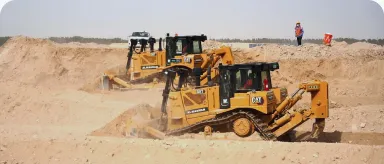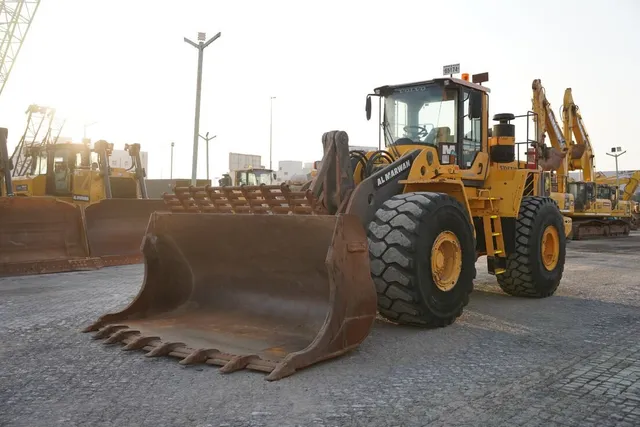Financing fuels rising demand for new and used mini excavators, with Kubota, Cat, and Bobcat leading the market.
The U.S. market for mini excavators is experiencing notable growth, particularly in the financing sector. According to Fusable's latest EDA equipment finance data, sales of financed new and used mini excavators rose year-over-year, reflecting the ongoing demand for these versatile machines in various industries, from construction to landscaping. This trend highlights the importance of financing as a key driver in the heavy equipment market, allowing more buyers to invest in machinery that enhances their operational capabilities.
New Mini Excavator Sales on the Rise
Between June 1, 2023, and May 31, 2024, a total of 33,957 new mini excavators were sold, representing an 8.1% increase over the previous year's 31,407 units. This growth underscores the expanding role that compact equipment plays in modern construction and development projects. Mini excavators have become indispensable due to their small footprint, versatility, and ability to perform a wide range of tasks in confined spaces.
Kubota led the pack in new financed mini excavator sales with a commanding 28.6% market share. Known for their reliability and performance, Kubota's mini excavators have become a favorite among contractors and operators. The company's dominance was supported by strong sales of popular models such as the Kubota KX040-4 and KX057-5, both of which are praised for their power and efficiency in a compact design.
Cat (Caterpillar) secured the second spot with 19.1% of the market. Caterpillar's reputation for building durable, high-performance equipment has made it a top choice in the industry. The Cat 305CR model, in particular, was one of the most financed mini excavators during this period, demonstrating the brand's continued strength in the compact equipment segment.
Bobcat rounded out the top three with 18.5% of new financed mini excavator sales. Bobcat has long been recognized for producing machines that deliver high performance in tough conditions. The company's wide range of mini excavators, including the Bobcat E50, has made it a popular option for buyers looking for reliability and versatility.
The U.S. market for new mini excavators is largely driven by demand in key states. Texas led the charge, accounting for 9.8% of total new mini excavator sales. The state's robust construction and infrastructure sectors have fueled a continuous need for compact machinery to handle everything from urban development to road construction projects. Florida followed with 6.8% of the market, driven by its growing real estate and infrastructure development. California, known for its large-scale infrastructure projects and urban construction, accounted for 5.9% of sales.
The Growing Market for Used Mini Excavators
The market for used mini excavators also saw growth, with sales increasing by 5.1% year-over-year. From June 1, 2023, to May 31, 2024, a total of 10,801 used mini excavators were sold through financing, compared to 10,274 units sold during the same period the previous year. This increase highlights the ongoing appeal of used machinery as a cost-effective option for contractors and businesses that need reliable equipment at a lower price point.
Caterpillar led the used mini excavator market with a 23.1% share of all financed sales. Cat's extensive dealer network and reputation for durable, long-lasting equipment have made its used machines highly sought after. Popular models like the Cat 305CR continue to be favorites in the secondary market, thanks to their proven reliability and performance.
Bobcat followed with 19.8% of used mini excavator sales. The company's robust and dependable machines, such as the Bobcat E35, are popular choices for buyers looking for high-quality used equipment that can handle demanding tasks. Kubota secured the third spot with a 16.1% share, with models like the Kubota KX040-4 leading the pack in used machinery sales.
The Deere 35G and Deere 50G models also performed well in the used market, further demonstrating the demand for equipment that offers a balance of power, durability, and affordability.
In terms of geographic distribution, Texas once again emerged as a dominant player, accounting for 7.2% of total used mini excavator sales. The state’s strong construction industry and ongoing infrastructure development projects have contributed to the high demand for both new and used equipment. North Carolina followed with 5.1% of sales, while Tennessee accounted for 4.7%.
Equipment Data Insights and Trends
EDA's equipment data provides valuable insights into financing trends in the U.S. mini excavator market. The data is sourced from state UCC-1 filings, which track financed construction equipment across the country. This allows EDA to maintain up-to-date information on market dynamics and the types of equipment being purchased through financing options.
Financing plays a significant role in the sale of mini excavators, with financed units representing 40% to 75% of the total number of machines sold in the U.S., depending on the type of equipment. This highlights the importance of financing as a tool for businesses and contractors who want to acquire high-quality machinery without the upfront cost of paying in full. It’s important to note that EDA's data does not account for equipment purchased through cash transactions or letters of credit, making their financing-focused insights a key barometer of the market.
Pricing Trends for Used Mini Excavators
The pricing of used mini excavators remained relatively stable over the 12-month period. According to Fusable's EquipmentWatch market trend data, the average price for a used mini excavator in the second quarter of 2023 was $49,669, which slightly decreased to $49,370 in the same period in 2024. This stability in pricing reflects a consistent demand for used equipment, balancing out supply fluctuations in the market.
The average age of used mini excavators also showed minimal change, dropping from 4.93 years to 4.64 years over the same period. This small shift indicates that buyers continue to seek out relatively newer machines in the used equipment market, valuing longevity and performance in their purchases. These averages were calculated from a pool of 196,763 resale listings in the EquipmentWatch database, highlighting the breadth of data used to analyze market trends.
Auction Market for Mini Excavators
The auction market for mini excavators also saw noteworthy activity during the 12-month period ending May 31, 2024. Caterpillar dominated the top price spots, with 15 of the 20 highest-priced mini excavators sold at auction. Bobcat and Kubota filled the remaining five positions, showcasing their strong presence in the secondary market.
According to EquipmentWatch's auction price guide, the highest auction price recorded for a mini excavator during this period was $145,000. This record-breaking sale took place at a J.M. Wood Auction Company event in Montgomery, Alabama, on March 21, 2024. The machine, a Bobcat E50, featured a unique Wilson amphibious undercarriage, designed specifically for work in wetlands and other challenging environments. The machine's specialized capabilities contributed to its high value at auction.
The mini excavator market in the U.S. continues to expand, driven by strong sales in both new and used equipment. Financing plays a crucial role in enabling businesses and contractors to acquire the machinery they need to grow their operations. Kubota, Caterpillar, and Bobcat remain key players in this dynamic market, with their machines consistently ranking among the top in both sales and auction prices. As construction and infrastructure projects continue to develop across the country, the demand for compact, versatile equipment like mini excavators is likely to stay strong, creating ongoing opportunities for both buyers and sellers in the industry.

Read More: https://almarwan.com/c/equipment-buy/excavators/mini-excavator








